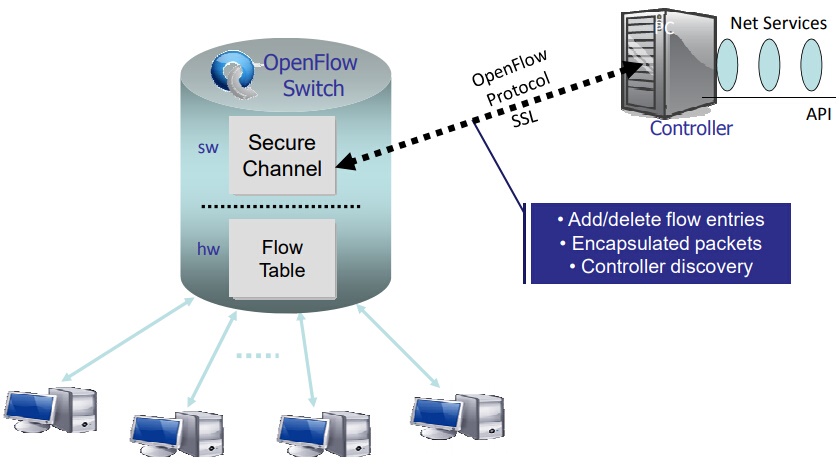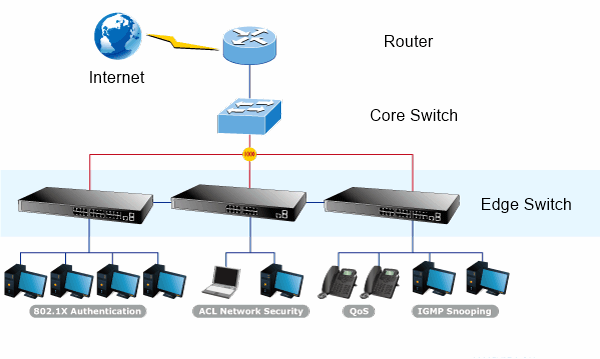IPv6 has been around for over a decade but is not yet seeing broad adoption. However, with the imminent exhaustion of available IPv4 addresses, the lack of IP addresses has become a more pressing problem. As the successor of IPv4, IPv6 will not only offer far more addresses, but will address assignments and additional network security features. What is IPv6 and how does it matters? What’s the differences between IPv4 vs IPv6? Let’s get some insight into these issues.

What Is IPv6 and How Does It Matter?
IPv6 (Internet Protocol Version 6) is a network layer protocol which allows communication and data transfers to take place over the network. IPv6 came into existence in 1998 and was created out of the concern that demand for IPv4 addresses would exceed availability. IPv6 protocol, which is 128-bits, consists of eight numbered strings, each containing four characters, separated by colon. This gives us an unbelievable amount of unique IP addresses. Despite these, IPv6 protocol also simplifies address assignment (for computers) and provides additional security features. It greatly solves network bottleneck caused by the soaring amount of Internet-connected devices.
Advantages and Disadvantages of IPv6 Protocol
IPv6 protocol is all about future-proofing, with which every current household could have trillions of connected devices, each with their own individual IP addresses, and there would still be plenty of IPv6 addresses to spare, without the need for NAT. Here are the pros and cons of IPv6.
- Increased Capacity: of address space—resources are efficiently allocated to accommodate additional web addresses.
- Efficient Routing: allows for easy aggregation of prefixes assigned to IP networks.
- Efficient Data Flow: enables large data packets to be sent simultaneously helping to conserve bandwidth.
- Security: is improved due in part to improved authentication methods built into network firewalls.
- Conversion: IPv4 is still widely used and the world is slow to convert to IPv6, the process of making the switch to IPv6 from IPv4 is slow and tedious.
- Communication: IPv4 and IPv6 machines cannot communicate directly to each other, in the very rare circumstance that they would need to.
- Readability: Understanding IPv6 subnetting can be difficult on its own, let alone trying to remember/memorize your IPv6 address.
IPv4 vs IPv6: What’s the Difference?
IPv4 protocol consists of four number strings – each containing three digits separated by dots. A standard IPv4 address is 32-bit and allows 4.2 billion unique IP addresses. By comparison, IPv6 uses longer IP addresses: with eight groups of four hexadecimal digits, separated by colons. Hence IPv6 significantly expands the pool of IP addresses. Besides, it also frees the internet from relying on NAT because of the dearth of IPv4. Ipv6 enables all devices to be accessible on the public network for easier management. Moreover, IPv6 is much secure than IPv4 at making sure Internet traffic gets to the correct destination without being intercepted.

What You Need to Enable IPv6
IPv6 has not yet put IPv4 into obsolescence, but we should at least get fully prepared for it. It would be better to make sure that any future PC, mobile device and gigabit Ethernet switch/router support IPv6 protocol. To use IPv6, you’ll need three things:
- An IPv6-Compatible Operating System: Your operating system’s software must be capable of using IPv6. All modern desktop operating systems should be compatible.
- A Ethernet Switch/Router With IPv6 Support: Check your network switch/router’s specifications to see if it supports IPv6 if you’re curious. Or when the need occurs, try to grasp network switch/router with IPv6 function.
- An ISP With IPv6 Enabled:Your Internet service provider must also have IPv6 set up on their end.
Conclusion
IPv6 is rolling out steadily, but slowly. As IPv6-only networks can dramatically simplify network operations and keep costs down, there is reason to believe the trend will continue. It’s important to prepare for the future and get IPv6 working, however, there is no need to race to implement this or worrying about it too much. FS.COM offers IPv6 enabled 10GbE switch and other copper/fiber switch with advanced feature sets that can fit your varying demand. For further information, contact us via sales@fs.com.


















